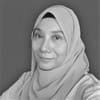MALAYSIA’S NATIONAL EDUCATION PHILOSOPHY (NEP), the guiding system since 1988, emphasises fostering well-rounded individuals for a united and progressive society. However, Malaysia’s education system has been criticised for being too rigid and not adequately preparing students for the demands of the modern world,[1,2] instead, the excessive focus on national unity and conformity may have stifled creative and critical thinking skills needed for 21st-century challenges.
The Malaysian Education Blueprint 2013-2025 was launched to align with Malaysia’s NEP. This comprehensive blueprint emphasises five key aspirations: access, quality, equity, unity and efficiency.






